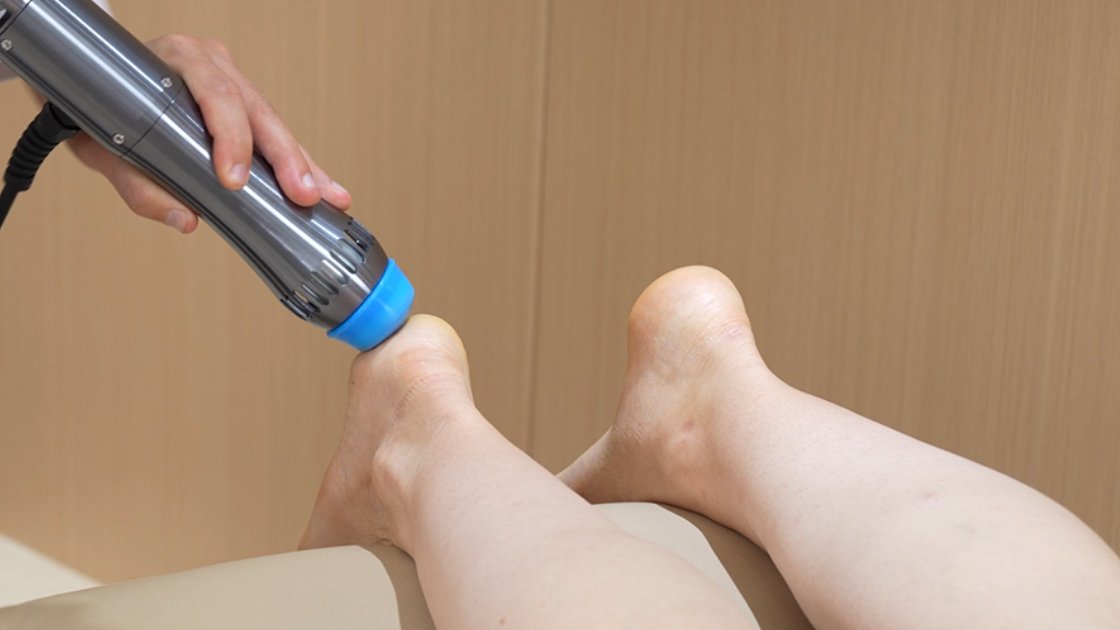Causes and Symptoms of Heel Spurs
Heel spurs are bony growths that develop on the heel bone, often due to repetitive stress, improper footwear, or poor foot mechanics. They are common in athletes, people who stand for long periods, and those with conditions like flat feet. These spurs cause intense pain, especially when pressure is applied to the heel, leading to discomfort during walking or exercise. The most common symptom of heel spurs is pain at the bottom or back of the heel, particularly after rest or in the morning. The pain may be sharp or aching and often worsens with activity. Swelling and tenderness around the heel area are also common, and these symptoms can become more pronounced with continued pressure. For many, shockwave therapy offers a promising solution for heel spurs to alleviate this pain and speed up recovery.
How Shockwave Therapy Helps Heel Spurs
Mechanism of Shockwave Therapy
Shockwave therapy uses high-energy sound waves that are directed at the affected area, stimulating the body’s natural healing process. When applied to a bony heel spur, the shockwaves help break down the calcified tissue, reduce inflammation, and improve blood flow to the area. This process accelerates tissue repair and can significantly reduce pain and swelling.
Targeting Bony Heel Spurs
The primary benefit of shockwave therapy for heel spurs is its ability to directly target the bone growth. Unlike traditional treatments that focus on managing symptoms, shockwave therapy addresses the root cause of the pain. The therapy promotes tissue regeneration and collagen production, which strengthens the surrounding tendons and ligaments, reducing the strain on the heel and ultimately alleviating pain.
Why Shockwave Therapy Is the Best Option
Non-Invasive Treatment
One of the biggest advantages of shockwave therapy is that it is non-invasive, meaning no surgery or injections are required. This makes it a safer and more convenient option for many patients who want to avoid the risks and long recovery times associated with surgical procedures. Additionally, there are fewer side effects compared to medications and injections.
Effectiveness in Pain Relief and Healing
Shockwave therapy is proven to be effective in providing long-term relief for heel spurs. By stimulating healing at the cellular level, shockwaves promote faster recovery and pain reduction. Research has shown that patients undergoing shockwave therapy for heel spurs experience significant improvement in mobility, with many reporting complete pain relief after several sessions.
Optimum start: Early Intervention for Best Results
The earlier you begin shockwave therapy for heel spurs, the more effective it is likely to be. When started early, shockwave therapy can prevent the condition from worsening, potentially reducing the need for more invasive treatments later on. Starting therapy at the first signs of heel pain can help speed up recovery and avoid long-term discomfort.
If you have been dealing with heel spur pain for several weeks or months and have not found relief from traditional methods like rest, icing, or stretching, it may be time to consider shockwave therapy. This treatment is ideal for individuals who are looking for a non-surgical solution that provides long-term results.
Conclusion: Say Goodbye to Heel Spurs
Shockwave therapy offers a highly effective, non-invasive treatment for bony heel spurs. It not only provides pain relief but also accelerates healing, addressing the underlying causes of heel spur pain. Whether you are seeking quick relief or a long-term solution, shockwave therapy can be a game-changer for those suffering from heel spurs. By starting treatment early, you can ensure faster recovery and avoid the need for invasive surgeries.
